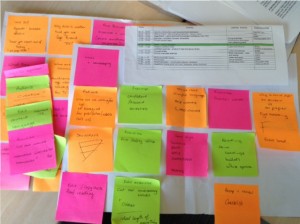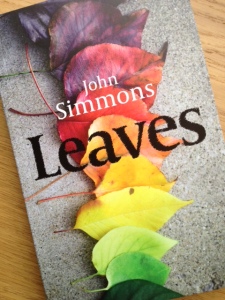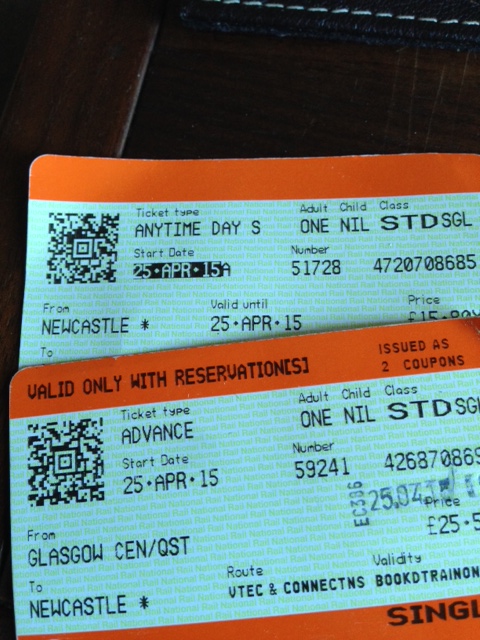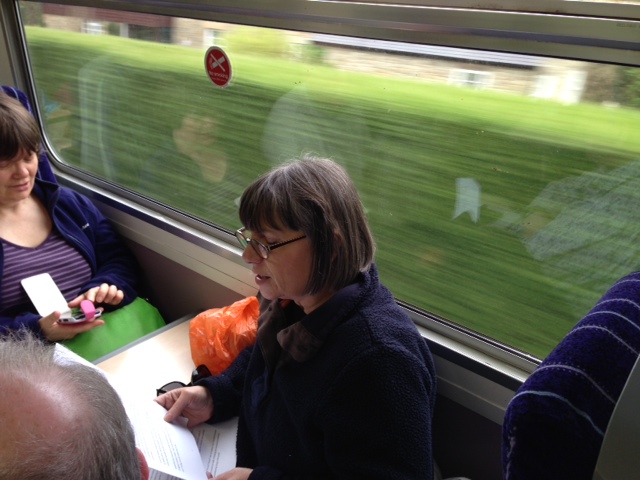Most often when I write about training, it’s in the context of physical training for the sports that I do, but today I’m thinking about the other training that I do in business writing.
I run writing and tone of voice workshops, to help people connect with their customers with communications that sound like they come from human beings rather than nameless, faceless organisations.
As many of the people who attend are in customer support roles, these sessions are always about how we speak as well as how we write. And increasingly I’m being asked to offer advice on things like webcasts and social media platforms as the range of ways of communicating expands.
I’ve had the benefit of some really excellent training throughout my working life. At the BBC it was often technical and skills based as I learned how to edit, first on tape and then digitally; how to ‘drive’ a studio desk; how to interview and construct radio packages quickly. Later I would learn digital skills, working on websites, using basic HTML, photo manipulation, and content management skills.
It was at the BBC that I started training other people. At first, it was just about passing on what I’d learned, helping someone put together a radio report, as someone had once helped me. But again, someone showed faith in me, and actually took the trouble to say “You’re good at training.”
I realised that I really enjoyed it too. I was there long enough to see people I’d trained passing on what they’d learned to others. I get a real kick out of that.
I have a little training mantra: “See one, do one, teach one.” I probably stole it from a medical drama, most likely ER. But I’ve found it really works, as you really know and have confidence that you know how to do something when you can teach someone else.
In my last blog post, I talked about having doubts and insecurities as a writer. When I’m doing a training session or workshop, if I have any, I can’t let them show. I have to have confidence in my knowledge and ability to deliver the materials and to make them interesting.
Not every workshop is perfect. Some are better than others. But the participants will never know if I rushed through an exercise because we were short of time, or handled a question differently the next time I was asked it.
Sessions can be tricky when I’m expecting a room full and only a handful turn up. I have to mentally rejig how I’ll manage small group discussions as they take their seats and adapt as I go.
Or when I get the sense that people have been told to come to a workshop, but don’t know why. Sometimes I feel like a stand-up comedian in front of a tough crowd. I just have to believe in my material and keep going, while trying to find the level of the room.
The best sessions are when people are really engaged and ask questions or challenge points I make. When they ask ‘Why?’ or say “But we have to do it like this…” I know they are taking an interest and I have a great opportunity to make that session really relevant.
Most writers are magpies. We steal inspiration, words, phrases and ideas from anywhere and everywhere, then make them our own.
I do the same with training courses. And once again, I’ve had the benefit of some excellent ones, from Dark Angels, 26, The Writer and Scarlett Abbott, to name just a few.
From classroom based to online learning – as well doing my own learning, I take notes and reflect on the content later. Was there a good ice-breaker? How was the session structured? How was the information presented? And when I can, I’ll pick the brains of other people who do training sessions. They are always very generous.
I’ve got some sessions with finance teams coming up. So right now, I’m gathering materials, thinking about aims and objectives for the sessions and looking forward to putting them together.
No one taught me how to be a trainer, or how to put together a workshop. I’ve learned by watching, listening, thinking and doing; through experience and analysis. I’m always looking for things that I can learn from, so I can improve my skills as a trainer.
What are your top tips for training?












